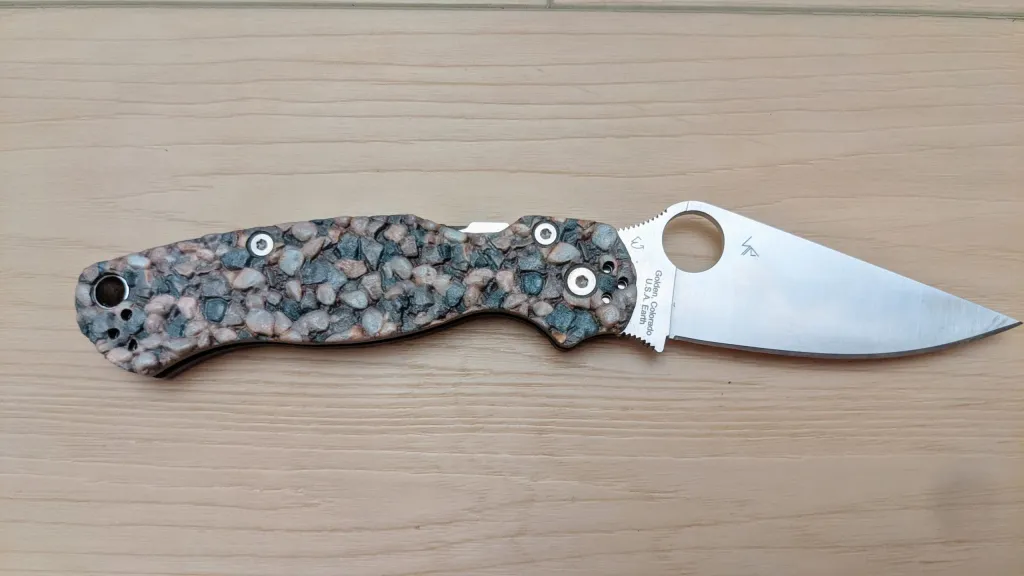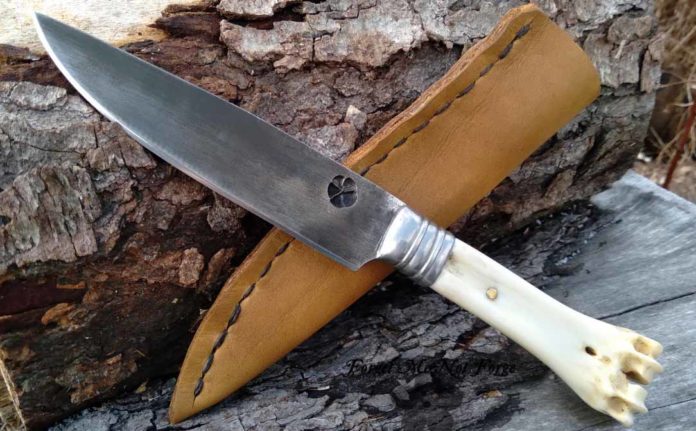The “knife scale” is the knife’s outside layer or handle, which gives the user a firm grip and comforting feel. This is where we grip a knife. Knife scales are made of wood, plastic, G-10, micarta, and metal. They protect the blade’s tang. The knife’s utility and aesthetics depend on its scale design and caliber. That should satisfy you!
What is a Knife Scale?
A knife’s scale is the handle’s outside covering that provides grip and comfort. We use it to grasp the knife. Wood, plastic, G-10, micarta, and metal are common knife scale materials.
They shield the blade tang. Knife functionality and attractiveness depend on knife scale design and quality.
Materials Used in Knife Scales

Knife scales, sometimes called handle scales or handle materials, give grip and aesthetics. distinct materials have distinct benefits. Common knife scale materials:
Wood: Wood knife scales are beautiful and comforting. Use stabilized or exotic hardwoods. Rosewood, ebony, cocobolo, and burl are examples.
Micarta: Layers of linen, canvas, or paper impregnated with resin form micarta. Durable, stable, and gripping, it is. Micarta is colored and textured.
G10: Epoxy-impregnated fiberglass cloth makes G10. It is lightweight, chemical- and moisture-resistant. G10 has several hues and textures.
Carbon Fiber: Carbon fiber is lightweight, strong, and modern-looking. Carbon threads are braided and resin-impregnated. High-end tactical knives have carbon fiber scales.
Synthetic Materials: Fiberglass, nylon, ABS, and polymer-based composites are utilized in knife scales. These materials are durable, impact-resistant, and customizable.
Bone: Knifemakers use bone. Its unusual texture comes from cattle, buffalo, and mammoth. Stabilization strengthens and prolongs bone scales.
Horn: Horn scales are manufactured from buffalo or stag horn. They are unique and can be polished. Horn scales, like bone, are stabilized for strength.
Metal: Rarely used, metal scales can make strong, attractive knife handles. Machined or textured stainless steel, titanium, brass, or copper provides grip and visual appeal.
Importance of Ergonomics in Knife Scales
Knife scale ergonomics improve grip and precision. Knife scale shape, curvature, and surface affect tactile feeling and efficiency. In prolonged cutting, knife scale ergonomics reduce hand fatigue and increase control.
Finger grooves, palm swells, and textured grips guarantee a pleasant and secure grip, lowering the risk of accidents and improving the user experience.
Factors to Consider When Choosing Knife Scales

To find the right knife scales for you, consider numerous things. Factors include:
Aesthetics
Knife scales enhance appearance. Scale design, color, and texture should complement your unique style. Whether you like a rustic wooden handle or a sleek and modern metal grip, knife scale aesthetics should be considered.
The Goal
Various knife scales work well. Plastic or micarta, which are moisture-resistant and easy to clean, may be best for food preparation knives. G-10 or metal scales are better for outdoor or survival knives due to their toughness and grip.
Comfort, Ergonomics
Check the knife scales for comfort and grip. Consider handle shape, size, texture, finger choils, and jimping. Ergonomics prevent hand fatigue and maximize knife control.
Maintainability and
Compare knife scale durability and upkeep. Some materials are more durable and require less cleaning or conditioning. Choose a material that suits your lifestyle and maintenance.
Budget
Material and craftsmanship affect knife scale prices. Weigh your budget versus scale quality and aesthetics. High-quality materials usually last longer and perform better.
How to Maintain Knife Scales

Knife scales must be maintained to last. Some general scale maintenance tips:
Cleanliness: Remove dirt, oils, and debris from knife scales regularly. Use warm water and mild soap or dishwashing detergent. Scrub the scales with a gentle cloth or brush without scratching them. Clean and dry the scales before storing the knife.
Avoid excessive moisture: Wood and bone are harmed by dampness. Do not soak or humidify knife scales. To avoid moisture seepage, dry the scales after cleaning.
Conditioning wood scales: To prevent drying and cracking, apply wood conditioner or oil to your knife’s wooden scales occasionally. Use the product’s instructions and wipe off excess oil.
Avoid UV exposure: Direct sunshine and UV rays can fade or discolor materials like wood and synthetics. Use a sheath or knife roll to protect your knife when not in use.
Avoid harsh chemicals: Chemicals can harm knife scales. Clean your knife without bleach, strong solvents, or abrasives. Use mild soaps or manufacturer-recommended knife cleaners.
Handle with care: Handle your knife carefully to avoid unnecessary scale wear. Striking hard surfaces with the handle can shatter or chip the scales. Use the knife carefully around caustic substances that could damage the scales.
Regular inspection: Check knife scales for deterioration, cracks, and loosening. To prevent further damage or safety hazards, address issues immediately. Depending on the material, you can polish, buff, or correct minor defects.
Questions (FAQs)
Which knife scales have drawbacks?
Knife scales have pros and cons. Wood scales may need more upkeep to avoid warping or cracking, while plastic scales may lack attractiveness.
Before choosing, consider each material’s advantages and downsides based on your needs and tastes.
Custom knife scales?
Knife scales are customizable. Micarta and G-10 can be machined, carved, or dyed. Customizing knife scales lets you add personal touches, patterns, or textures to your knife, making it unique.
Replace knife scales?
Replace knife scales by removing and replacing them. Knife construction affects the process. Disassembling the knife, removing the scales from the tang, and mounting the new scales with adhesive or fasteners is typical.
Those unfamiliar with the process should consult product instructions or a specialist.
Left-handed knife scales?
Some knives have ambidextrous or left-handed scales. Left-handed users will enjoy these ergonomic scales. They may have right- and left-handed finger grooves or textured grips.
Conclusion
Knife enthusiasts must grasp knife scales. Knife scales improve grip and appearance. There is a knife scale for everyone, from natural wood to sturdy polymers and high-tech composites.
When choosing knife scales, consider ergonomics, aesthetics, maintenance, and use. The appropriate scales can improve your knife’s longevity, functionality, and user experience.
Maintain your knife scales for longevity. Always follow the manufacturer’s cleaning and conditioning instructions.
Understanding knife scales helps you choose the right knife, whether you’re a chef, an outdoorsman, or just a fan of fine blades.
